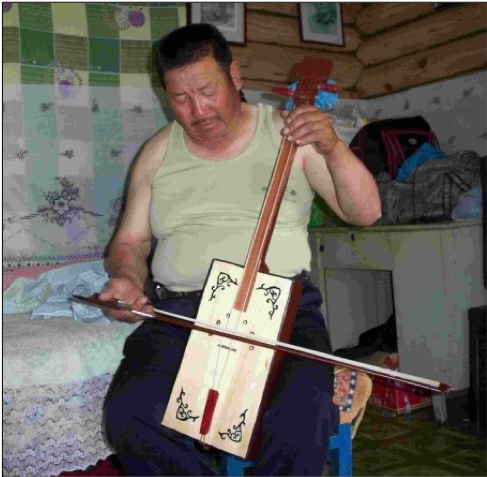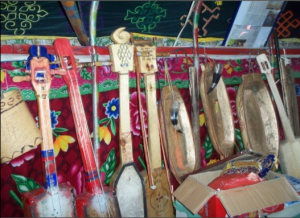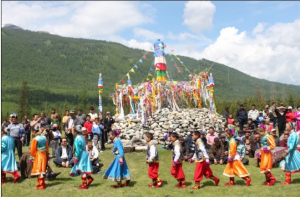First published on 02/29/2016, and last updated on 03/29/2018
By: Dr.Yuxin Hou, research fellow at Fun-X Culture Limited Company, ICCA Consortium Honorary member
Despite the lack of legal and policy recognition and support from the Xinjiang government, a wide range of ICCAs exist de facto in the region of Xinjiang.
Local leaders voice their claims, strengthen their identities and maximize their advantages using strategies drawn from a combination of implicit, explicit and indigenous perspectives.
Suo Longge is one of these leaders. He is Tuvan, and not only has his own Tuva Museum, but also actively participates in activities to strengthen Tuvan identity and self-governance capabilities by educating youngsters at various festivals of Tuvan history and culture. Suo Longge plays a key role in Tuvan people’s rights claims, and helps with drafting applications to protect the Tuva culture and local environment. When he writes, he chooses his words skillfully and makes thoughtful suggestions about developing eco-tourism, reviving traditional culture, promoting indigenous ecological knowledge, developing the local economy, protecting the local environment and supporting community cohesion. Regarding eco-tourism, he emphasizes the importance of non- monetary values, such as the furtherance of cultural understanding and fostering an appreciation of the natural beauty of the land. In order to attract the government’s attention, Suo Longge puts forward the idea that incorporating Tuvan culture into their local environment’s self-governance can help harmonize any possible tension between local peoples and tourism. The particular cultural development project proposed by Suo Longge includes many aspects of Tuvan culture: its history, oral literature, music, dance, song, handicrafts, snowboarding, archery, wrestling, horse racing, hunting skills and the production of hunting gear.
Besides unifying Tuvan village leaders, Suo Longge strives to include leaders from more distant, scattered settlements, along with individuals sympathetic toward their cause. He brings leaders together in seminars where they can plan strategic actions to submit, step by step, to higher authorities. This unification helps the leaders reach agreements and strengthen their effectiveness in dealing with authorities, local governments and interested local groups. Through the mentorship of Suo Longge, the Tuvan leaders have become increasingly effective in their negotiations with local authorities. Their strategy is to enhance the authorities’ support for policies that will counter the damage to the local environment and culture caused by tourism.
Suo Longge also facilitated the First Tuvan Culture Festival, by inviting mass media — television and newspaper reporters— and experts to participate in seminar discussions on the Tuvans’ living, environmental and cultural situation. This event was not a one-way dissemination of information, nor was it designed simply to attract official attention. Instead, it aimed at connecting people and discussing different systems of self-governance, along with ways to protect cultural knowledge and support local communities. One effective action is the establishment of an indigenous museum… which can be much more than a museum, and actually promote the importance of a living culture. In Xinjiang, rituals are cultural practices that play a role more important than oral or written education. Rituals combine spirituality and physical experience to convey a sense of cultural identity and ecological wisdom to community members, especially the young. Along with this implicit way of intensifying self-governance and environmental protection of ICCAs, a more explicit strategy is the use of collective petitions for economic, cultural and environmental right claims.
Overall, the Tuvan local leaders’ actions clearly demonstrate the wisdom of a communication strategy that connects multiple forces (internal and external, higher authorities and local government, mass media and experts) in order to pull people together and act effectively. The local leaders’ wisdom in using collective petitions, establishing eco-museums, enlisting the media and scholars as well as fostering ceremonial or ritual education, reflects the cultural awakening of Xinjiang’s ICCAs and their understanding of the demands of self-governance in the modern age. Despite a lack of legal recognition, there are indications that the de facto existence of self-governance practices on these territories will provide an important base for achieving legal recognition in the future.
In conclusion, governance methods, challenges of modernity, strategies adopted and approaches taken in ICCAs in Xinjiang have all contributed to the ICCAs present situation, in both its plight and its promise. Through an analysis of this local situation, as a matter of fact, we can have a pretty good idea of the overall situation of ICCAs in China.


